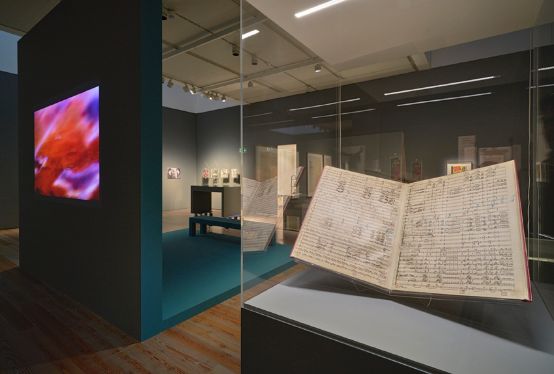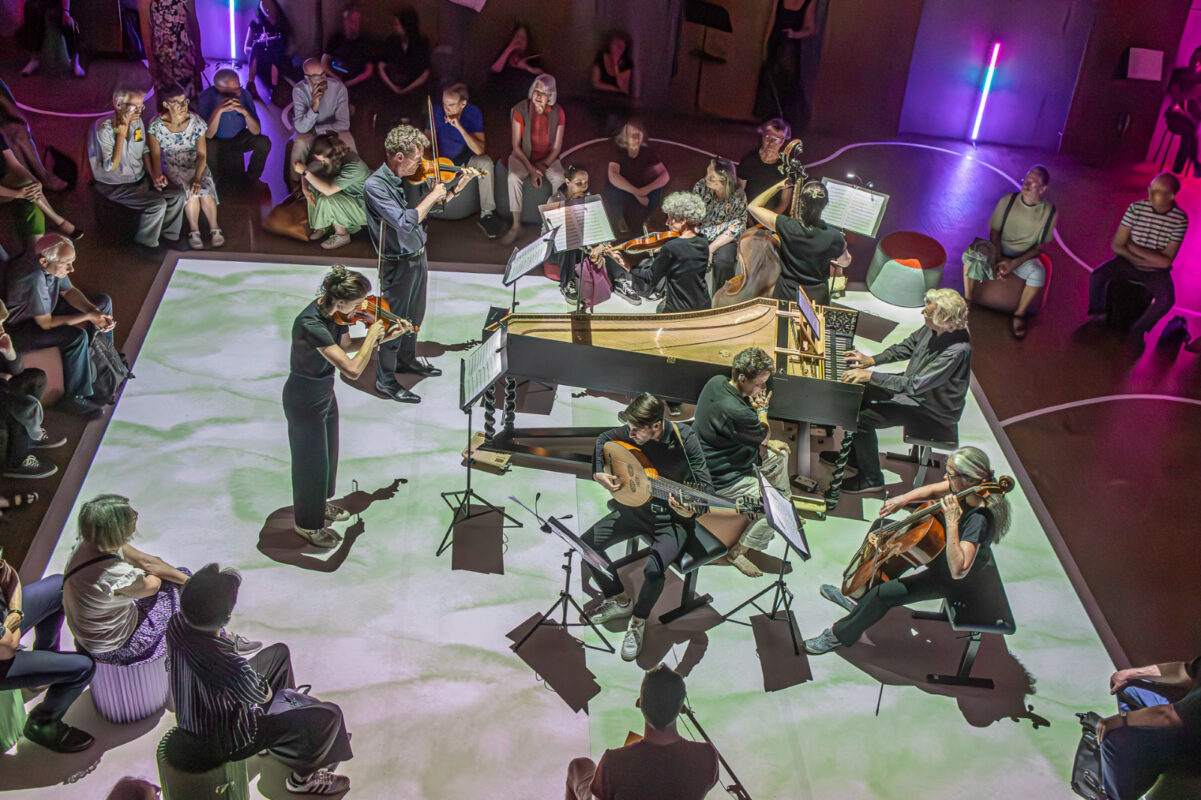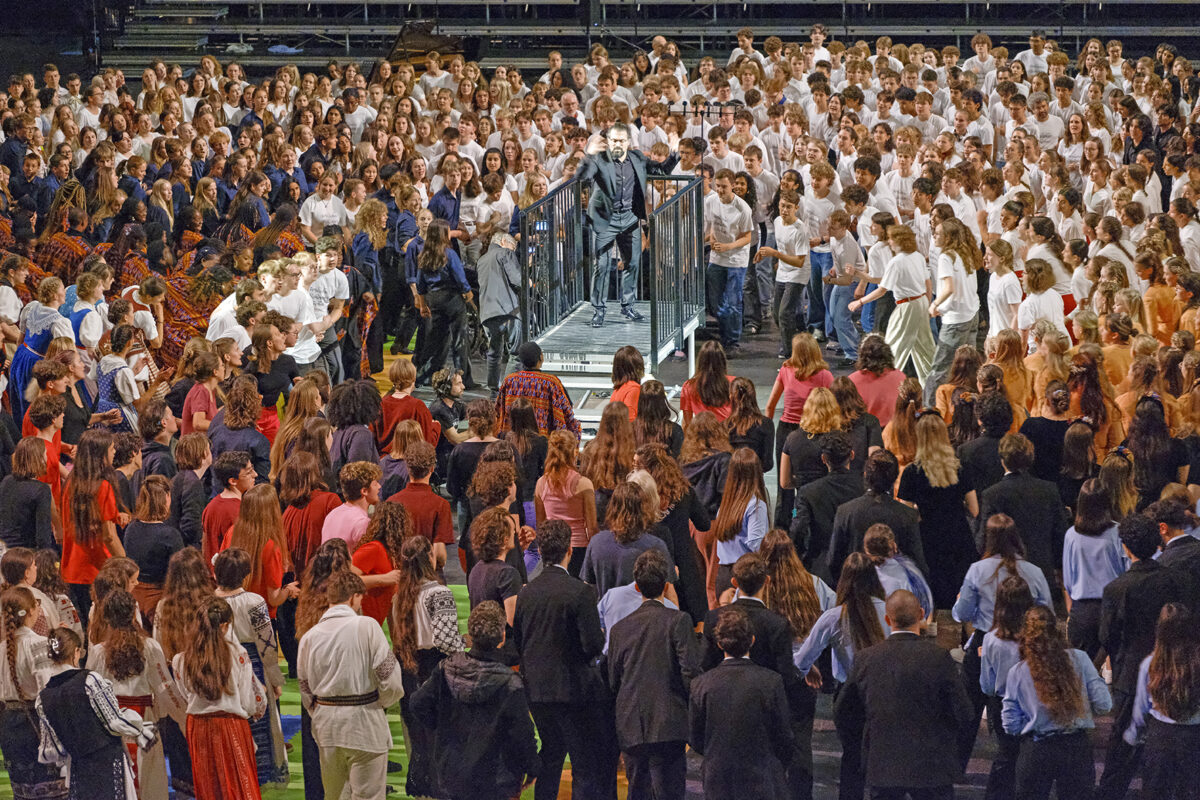Take it and run away
No one creates in an empty space. Most artists like to draw extensively from elsewhere. An exhibition at Museum Tinguely now shows how they do this.

The treasures at the Paul Sacher Foundation Basel (PSS) never cease to impress. It could probably exhibit some of them at random and you would be fascinated by the aura of the autographs and testimonies. All the better when it concentrates on one composer or, as here, on a rather topical subject: "Re-Set". The subject - there are two subtitles in the documents - is appropriation, recourse and continuation in music and art since 1900. This is very popular in times of sampling and remixing, but there is a long tradition of this.
The PSS explores the theme in four rooms of the Tinguely Museum: in the case of other people's, the artist's own and folk music adaptations and in relation to popular art. A beautiful catalog with numerous knowledgeable and thoroughly readable articles accompanies the exhibition. Equipped with an iPad, visitors can set off to experience the exhibits in their sound form and thus deepen their impression.
First of all, there are the examples in which composers refer to colleagues from history. One could certainly fill an exhibition with the veneration of Bach alone (represented here by Webern, Kagel, Gubaidulina), but fortunately Machaut (with Birtwistle, Kurtág and Sciarrino), Gesualdo (with Stravinsky, Sciarrino and Klaus Huber), Beethoven (with Kagel) and Satie (via Debussy) are also featured. Schönberg's Piano Pieces op. 19 (a popular task for composition students) are represented in instrumentations by Rihm, Holliger and Younghi Pagh-Paan.
The second room provides an insight into the creative process, namely when composers edit, improve and rearrange their own works, as Stravinsky did with the Firebird tat or Webern with the Rilke songs. Boulez, Maderna, Ligeti or Rihm transplanted parts of one piece into another or pushed core ideas further. The PSS has every conceivable material at its disposal, so that it can document the various stages of the work meticulously and clearly.
Malicious and abysmal is missing
Folk music then in the third hall, Eastern Yiddish songs by Milhaud and Stefan Wolpe, plus years of research by Bartók, Veress and Lutosławski and their transformation into compositions. This is sometimes very close to the sources, but in the case of Berio, Reich and Holliger, for example, it goes beyond them. Alb-Chehr the border to an imagined folk music. It is somewhat surprising to note a few absences here: Henze (who is also absent from the arrangements, for example with his biting orchestration of Wagner's The two grenadiers) or Globokar. It's as if all the political implications are being avoided.
Finally, the fourth room stands out, its title somewhat treacherous: "Subliminal elitism. Popularization and Nobilitization". Perhaps they wanted to put something popular on it and therefore resorted to film clips from Disney's Fantasia (with Stravinsky's Sacre du Printemps) and Kubrick's 2001: A Space Odyssey (with Ligeti). But it has little to do with the theme. Accordingly, it stands isolated next to the other exhibits. Certainly there is something to discover there too, Beatles arrangements not only by Berio, but otherwise this part seems spongy, quickly soaked up, quickly expressed again. Above all, it becomes clear here that the exhibition, as diverse as it is, has few areas of friction and no explosive power. Of course, there are always some omissions to criticize, but it is telling what is almost completely absent here: the malicious and the abysmal, as if it had been avoided. This exhibition is very sweet.
Counterpoints would be necessary. At best, these could be found in the basement. The exhibition is preceded (and absent from the catalog) by the Tinguely Museum's contribution, a small show of works based on Duchamp's famous Urinoir. This does not quite fit in with the music exhibits. It may be that in the visual arts, as host Roland Wetzel said at the vernissage, "re-set" means something different than in music, but perhaps there would have been more conclusive examples - quite a few musicians referred to Duchamp. So there is still something left for another exhibition.
Museum Tinguely, until May 13, 2018
Catalog, edited by Simon Obert and Heidy Zimmermann; 328 p., richly illustrated; Mainz, Schott, 2018; ISBN 978-3-7957-9885-7; Fr. 35.- during the exhibition.








